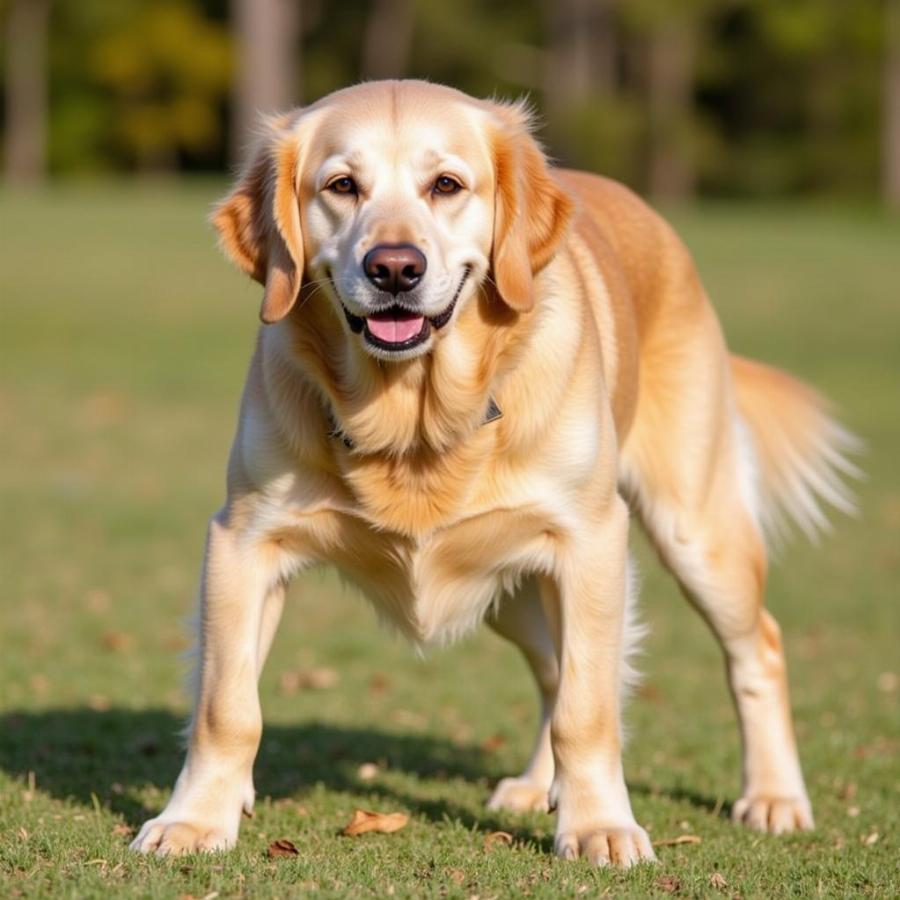When you search for “dogs make out,” you’re likely curious about canine social behavior, and perhaps a little confused by the human connotation of the phrase. While dogs don’t “make out” in the same way humans do, they do engage in a variety of behaviors that might resemble affection or even mating. Understanding these behaviors is crucial for responsible dog ownership. This article will explore the different ways dogs interact with each other and explain what these actions really mean.
Decoding Canine Body Language: What “Making Out” Really Means
Dogs communicate primarily through body language. While they can vocalize, barks, whines, and growls only tell part of the story. What looks like “making out” could be anything from playful interaction to dominance displays. Learning to read your dog’s body language will help you understand their interactions with other dogs, and prevent potential misunderstandings or even conflicts. For example, a playful bow, where the dog lowers its front end while keeping its rear up, is an invitation to play, not a sign of aggression. Likewise, a relaxed, open mouth with a slightly panting tongue usually indicates a happy and comfortable dog.
 Dog Play Bow
Dog Play Bow
Playful Interactions: More Than Just Puppy Love
Often, what might appear as “making out” is actually dogs engaging in playful behavior. This can include wrestling, chasing, mouthing, and even mounting. These behaviors are important for socialization and help dogs establish hierarchy and boundaries. It’s important to let dogs play and interact, but it’s also crucial to supervise them and intervene if play becomes too rough or one dog seems uncomfortable. Remember, play should be mutually enjoyable for all dogs involved.
Mounting Behavior: It’s Not Always About Sex
Mounting, while sometimes sexually motivated, can also be a display of dominance or even a way to relieve stress or excitement. It’s important to observe the context of the mounting behavior. If a dog is mounting another dog that appears stressed or is trying to get away, it’s important to interrupt the behavior and separate the dogs. You can visit our parks for dogs page for tips on safe and supervised play. Understanding these nuances in dog behavior can help ensure a positive and safe environment for all dogs involved.
Social Hierarchy in the Canine World
Dogs have a complex social structure. They use various behaviors to establish and maintain their position within a group. These behaviors can include mounting, staring, and even seemingly aggressive actions like growling or snapping. It’s essential to recognize that these behaviors are often part of normal canine communication. However, if these behaviors escalate into actual fighting or cause distress to one or more dogs, intervention is necessary. Learning about canine social dynamics can help you interpret what you see when dogs interact.
Signs of Genuine Affection: True Doggy Love
While “making out” isn’t really in a dog’s repertoire, they do express affection in various ways. These can include licking, leaning against you, gentle nudging, and even soft whining. A dog that trusts and loves you will often seek physical contact and show signs of relaxation in your presence. A common misconception is that a wagging tail always signifies happiness. While often true, a wagging tail can also indicate anxiety or even aggression. The key is to observe the entire body language, not just the tail. Just as with hot dog related foods, a dog’s whole body language tells the story. You can learn more about this on our page what to make with hot dogs without buns.
Conclusion: Understanding Canine Communication is Key
So, while dogs don’t “make out” in the human sense, understanding their complex social interactions is crucial for responsible dog ownership. By learning to read their body language and recognizing the different ways they communicate, we can better understand their world and ensure their well-being. This understanding helps foster positive interactions between dogs and promotes a harmonious relationship between dogs and their owners. Remember, learning about your dog is a continuous journey.
FAQ:
- Do dogs kiss like humans? No, licking is a dog’s way of showing affection, but it’s not the same as a human kiss.
- Why does my dog mount other dogs? Mounting can be a sign of dominance, playfulness, or even stress.
- Is it normal for dogs to wrestle? Yes, wrestling is a common form of play among dogs.
- How can I tell if my dog is enjoying playing with another dog? Look for relaxed body language, play bows, and mutual engagement.
- What should I do if my dog’s play becomes too rough? Intervene and separate the dogs if play becomes aggressive or one dog seems uncomfortable.
- Is mounting always sexual? No, mounting can also be a display of dominance, excitement, or even a way to relieve stress.
- Why does my dog lick my face? Licking can be a sign of affection, submission, or even a way to gather information.
Related Questions to Explore:
- What are other signs of anxiety in dogs?
- How can I socialize my dog properly?
- What are the different types of dog play?
Beaut Dogs is your go-to resource for all things canine. We provide reliable and in-depth information about the fascinating world of dogs, covering everything from breed characteristics and care tips to training advice and product recommendations. When you need support or have questions about your furry friend, don’t hesitate to contact us at [email protected] for detailed and accurate answers. We’re passionate about helping you provide the best possible care for your beloved companion. Visit us at https://beautdogs.com. You might also find our page on do weiner dogs bark a lot helpful. Another resource for specific needs like flea and tick prevention, especially for smaller breeds, can be found on our k9 advantix 2 small dog page. And finally, if you’re interested in specific breed characteristics related to appearance, you can find information about the Dachshund’s unique build on our hot dog neck page.